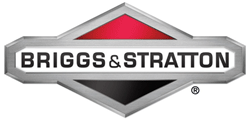Make sure you haven't got the discount earlier.
Appliance Parts
- Accessories
- Dishwasher
- Dryer
- Stove / Oven
- Microwave
- Refrigerator
- Washer
- See more... See less...
Lawn Equipment Parts
- Lawn Mower
- Chainsaw
- Blower
- Generator
- Air Compressor
- Lawn Tractor
- Pressure Washer
- See more... See less...
Food Preservation Basics
Since the beginning of time, man has searched for ways to preserve the life length of food. Before the concept of food preservation developed, humans were forced to travel from location to location in order to locate fresh foods. Food had to be eaten almost immediately after it was either killed in instances of animal meat or not long after harvesting for fruits and vegetables. Discovering a method to save food was vital to the expansion and development of mankind as it is today.
Ancient cave men were among the first to discover ways to safety store and preserve food. Cave men in cold locations used freezing as a way to store fish, seal meat and other small animals to prevent long searches for food in harsh weather. Their technique was very uncomplicated and consisted of merely laying the fresh meat on ice which kept the food safe to eat for small amounts of time between severe storms. Ancient men in warmer climates discovered the benefits of drying foods as a measure to keep them stored for longer periods of time. Fruits and vegetables have been dried as preservation methods dating back to the earliest dates of man on record. Fermentation is also one of the earliest forms of food preservation. The process was discovered accidentally when rain met with barley grains. The first recorded date of evidence of the fermentation process was discovered around the year 10,000 B.C.
The earliest methods of food preservation are still used today yet the variety of effective methods and technology has greatly expanded. Freezing, drying and fermenting are still among the most popular in food preservation yet beginning in the Roman time period, other methods began to be introduced. Pickling was amongst the most popular in this time which is a process consisting of using acids, such as vinegar, to oxidize bacteria in food to acetic acid which will not cause illness when consumed. Canning and preserving foods with sugar or honey was also used regularly in these time periods. Curing became popular in the early 1800's which usually consisted of using salt to keep meat fresh. In this time period, technology has developed greatly enabling all of these methods to be enhanced for convenience and safety as well as. Scientific methods are continuously gaining popularity, such as heating, ultra high water pressure, osmotic inhibition and other complex methods.
Each method provides the same end result, food is able to be saved and kept fresh for another day, week or month. Just about any food can be saved and stored if the proper technique for the food product is used correctly. Before beginning any food preservation technique, it is important to thoroughly research the shelf life and correct ways to perform the technique. This is a way to avoid unwanted bacteria from contaminating the food and causing illness. Various resources on the history of food preservation, the scientific process, methods of food preservation and safety tips and measures have been provided to ensure a safe and effective preservation process.
History of Food Preservation
- Historical Origins of Food Preservation: A look into the history of food preservation and a detailed look at the origins of popular food preservation methods and techniques.
- The History of Food Preservation: How Science in the 18th and 19th Century Changed the Food Industry: Great information on the history and progression of food preservation.
- Food Preservation Trends in History: A deep look into the popular trends and methods of food preservation throughout history.
Preservation Process
- How Food Preservation Works: The scientific reasons behind the effectiveness of food preservation methods.
- Food Science and Preservation: Information on the food preservation process and how to understand the process at home.
- Food Preservation: A great guide to understanding food preservation.
- Family and Community Health: Food Preservation: A overview of the different methods of food preservation.
Methods of Preserving Foods:
Drying
- Solar Drying Food Preservation: Solar drying practices versus traditional drying methods are discussed and compared.
- Drying: A comprehensive guide to learning to dry foods.
- Quality for Keeps: Food Preservation -How to Use Dried Foods: This page discusses how to use dried foods in meals featuring many recipes and original ideas.
Freezing
- Freeze Drying Foods: Information on how to freeze dry foods to increase the storage length.
- Frozen Food Preservation Methods: The benefits of freezing foods as a method of food preservation.
- Freezing: How to freeze a variety of different foods.
Sugar
- Sugar in Food Preservation: The history and current state of using sugar in food preservation techniques.
- Reduced Sugar and Sugar-free Food Preservation: All about food preservation with sugar focusing on how to reduce sugar and maintain weight control.
- Low Sugar Alternatives for Jams and Jellies: A great guide for cutting out the sugar in most jam and jelly recipes.
Pickling and Fermentation
- Pickling and Fermentation Guide: An understandable guide to learning the process of pickling and fermenting foods at home.
- Food Pickling Tips and Techniques: The easiest tips and tricks to ensure successful pickling of foods.
- Food Preservation by Fermentation: A guide to using the fermentation process for food preservation purposes.
- Pickling: A comprehensive guide to explaining how to pickle foods.
- Fermenting: A comprehensive guide to explaining how to ferment foods.
Curing and Smoking
- Curing and Smoking: A detailed how to on curing and smoking meats.
- Curing and Smoking: A Guide to curing and smoking a variety of meats.
- Smoking Fish at Home: A detailed guide explaining how to smoke fish.
Canning and Bottling
- Canning and Freezing Techniques: A look at the most up-to-date canning techniques and recommendations for food storage.
- Canning and Bottling Preservation: Instructions on how to begin using the canning and bottling food preservation technique.
- Canning: Detailed directions on how to can specific kinds of food.
Jellying
- Making Jam and Jellies: A comprehensive guide explaining how to jam and jelly.
- Jams and Jellies Lesson 5: A knowledgeable guide from the University of Alaska on Jams and Jellies.
Other Methods
- Vacuum Packed Food Preservation: A description of the process of vacuum packaged foods and how the process extends the life of food.
- Osmotic Inhibition: A guide to the Osmotic Inhibition technique used for food preservation.
Food Preservation Safety
- Food Safety and Preservation: A guide to performing food preservation techniques safely to avoid food contamination.
- Food Safety in Canned Food Preservation Methods: How to identify and dispose of spoiled or contaminated canned foods after the food preservation process has taken place.
- Techniques to Safely Preserve Food: A comprehensive guide and look at the best and safest techniques to preserve food.
- Using Preserved Foods Safely: A detailed handout discussing what to look for in preserved foods to guarantee safe eating.
Educational Resources
- Historical Food Preservation Methods: A lesson plan on food preservation in the colonial period.
- Utah Education Network: Food Preservation: A great page on food preservation education featuring a ton of attachments, worksheets and lessons.
- Food Preservation and Contamination: Facts on food preservation safety featuring a freeze drying experiment for students.
- Search your model number to find:
- Genuine OEM parts guaranteed to fit
- Free manuals and guides
- Repair instructions and videos


































